Accommodation · Asia · Attractions · Going Out · Hotels · Japan · Regions
Hiking the Nakasendo Trail and staying at a Japanese ryokan
We had been planning our once-in-a-lifetime adventure for nearly a year; 10 months travel around the world visiting 15 countries to explore the history, landscape, wildlife, people and food of each destination across South America, Australasia, the Polynesian Triangle, Southeast Asia, China and Japan.
Our adventure included some of the must-see attractions of global travel; the Atacama Desert, Galapagos Islands, Easter Island, Machu Picchu, Ayres Rock and the Great Wall of China. Our hike on the Nakasendo Trail followed by a careful stay at a ryokan was to be one of the most memorable experiences.
Our luggage was forwarded on to our next city hotel with typical Japanese efficiency allowing my wife, Helene and I to take the wonderful bullet train and far slower local trains to Magome to start our hike on the Nakasendo Trail.
 But not before we had our first sight of the magnificent Mount Fuji as we hurtled out of suburbia into lush rolling hills and picturesque valleys. Like every National Geographic image we had seen of Fuji it stood majestically in isolation, dominating the landscape with its summit in snow as if the peak had been dipped in a bucket of melted vanilla ice cream. It was a crisp clear day without a cloud in the blue sky, my goodness it was a wonderful sight. But Mount Fuji had to wait, first was a hike on the most famous trail in Japan.
But not before we had our first sight of the magnificent Mount Fuji as we hurtled out of suburbia into lush rolling hills and picturesque valleys. Like every National Geographic image we had seen of Fuji it stood majestically in isolation, dominating the landscape with its summit in snow as if the peak had been dipped in a bucket of melted vanilla ice cream. It was a crisp clear day without a cloud in the blue sky, my goodness it was a wonderful sight. But Mount Fuji had to wait, first was a hike on the most famous trail in Japan.
 The Nakasendo Highway or “Road through the Central Mountains” was part of feudal Japan’s network of highways and first established in the 8th C. linking the areas around the then capital Nara as the state grew. It continued to develop until the Edo period when the centre of power moved to what is now Tokyo and it became a communications route to send messages, goods and personnel across the empire between Kyoto and Tokyo. Trodden by feudal lords, samurai, merchants and ancient travellers it was our turn to follow in their footsteps on this most beautiful of trials.
The Nakasendo Highway or “Road through the Central Mountains” was part of feudal Japan’s network of highways and first established in the 8th C. linking the areas around the then capital Nara as the state grew. It continued to develop until the Edo period when the centre of power moved to what is now Tokyo and it became a communications route to send messages, goods and personnel across the empire between Kyoto and Tokyo. Trodden by feudal lords, samurai, merchants and ancient travellers it was our turn to follow in their footsteps on this most beautiful of trials.
 We were just setting off to tackle our small part of the route when we met two elderly ladies a little red faced and puffing a bit, coming in the opposite direction.
‘Goodness,’ said Helene, ‘you look exhausted, is it that tough?’
‘Are you just setting off?’ one of them asked, in a broad North Country accent.
‘Yes, how long has it taken you?’ she asked.
‘Four days so far,’ replied the elderly lady.
The couple went on to explain they were hiking half of the whole Highway, although we had heard it takes up to 12 days to hike the whole trail. We felt a little too ashamed to admit we were tackling only a few miles, so wished them luck and set off up the narrow cobbled path on a beautiful warm and clear day.
We were just setting off to tackle our small part of the route when we met two elderly ladies a little red faced and puffing a bit, coming in the opposite direction.
‘Goodness,’ said Helene, ‘you look exhausted, is it that tough?’
‘Are you just setting off?’ one of them asked, in a broad North Country accent.
‘Yes, how long has it taken you?’ she asked.
‘Four days so far,’ replied the elderly lady.
The couple went on to explain they were hiking half of the whole Highway, although we had heard it takes up to 12 days to hike the whole trail. We felt a little too ashamed to admit we were tackling only a few miles, so wished them luck and set off up the narrow cobbled path on a beautiful warm and clear day.
 Its full length is an impressive 531 km weaving between mountain ranges, on paved and cobbled paths. 69 Villages along its route were selected as juku Post Towns to provide food and lodgings for official travellers, our hike was from one of these, Magome to the most beautiful of them all, Tsumago the finest traditional Post Town in Japan.
Its full length is an impressive 531 km weaving between mountain ranges, on paved and cobbled paths. 69 Villages along its route were selected as juku Post Towns to provide food and lodgings for official travellers, our hike was from one of these, Magome to the most beautiful of them all, Tsumago the finest traditional Post Town in Japan.
 In 1968 the Tsumago locals banded together to create a movement and protect the heritage of their town. Their intention was to preserve its old Edo buildings and the Meiji Period unique character of the village, so there are no TV ariels, telephone pylons or electric cables. It looks just like it did hundreds of years ago.
“Ring bell hard against bears” read the sign attached to the first bell post we came across. Without a bear to ring it against I gave the chain a long hard pull with the hope that the peels would scatter any bears on our path. The bells reminded me of the school dinner bell; I hoped it wasn’t the same for the bears.
In 1968 the Tsumago locals banded together to create a movement and protect the heritage of their town. Their intention was to preserve its old Edo buildings and the Meiji Period unique character of the village, so there are no TV ariels, telephone pylons or electric cables. It looks just like it did hundreds of years ago.
“Ring bell hard against bears” read the sign attached to the first bell post we came across. Without a bear to ring it against I gave the chain a long hard pull with the hope that the peels would scatter any bears on our path. The bells reminded me of the school dinner bell; I hoped it wasn’t the same for the bears.
 The bell posts were dotted every half a mile or so along the track as it passed through the pine forest above the gushing Araragi River. We thought singing along the way might add to the bells to frighten off the occasional bear, or at least Helene thought my tone deaf voice might.
Coming out of the bear’s home we arrived at the river bank and an absolutely stunning view of cherry blossom in whites, pink and reds, some trees surprisingly displaying all three. The scene was thick with colour and an ideal place to stop for our picnic of sushi, Sapporo beer and a small bottle of sake on a low table under the cherry blossom, what could be more Japanese? Wonderful.
The bell posts were dotted every half a mile or so along the track as it passed through the pine forest above the gushing Araragi River. We thought singing along the way might add to the bells to frighten off the occasional bear, or at least Helene thought my tone deaf voice might.
Coming out of the bear’s home we arrived at the river bank and an absolutely stunning view of cherry blossom in whites, pink and reds, some trees surprisingly displaying all three. The scene was thick with colour and an ideal place to stop for our picnic of sushi, Sapporo beer and a small bottle of sake on a low table under the cherry blossom, what could be more Japanese? Wonderful.
 The trail took us through forests with a deep carpet of pine needles and along old cobbled paths hugging the river, it was a beautiful way to spend an afternoon with very few other walkers on the route.
On arrival at Tsumago we were not disappointed, what an elegant and beautiful village it is, built in the stunning style of ancient Japan and thankfully not overly commercialised.
Our stay that night was at the traditional Japanese boutique hotel Hanaya Ryokan, where we were to experience the best of Japan’s hospitality and its exacting etiquette. It’s the footwear that poses the biggest challenge. Shoes off and lots of mutual bowing on arrival, we were then provided with slippers and followed our host to our room where we were required to enter and remain bare foot, apart from the obligatory colourful toilet sandals, to be worn only inside the toilet. Leaving the smallest room with the sandals still on would be a definite faux pas.
The trail took us through forests with a deep carpet of pine needles and along old cobbled paths hugging the river, it was a beautiful way to spend an afternoon with very few other walkers on the route.
On arrival at Tsumago we were not disappointed, what an elegant and beautiful village it is, built in the stunning style of ancient Japan and thankfully not overly commercialised.
Our stay that night was at the traditional Japanese boutique hotel Hanaya Ryokan, where we were to experience the best of Japan’s hospitality and its exacting etiquette. It’s the footwear that poses the biggest challenge. Shoes off and lots of mutual bowing on arrival, we were then provided with slippers and followed our host to our room where we were required to enter and remain bare foot, apart from the obligatory colourful toilet sandals, to be worn only inside the toilet. Leaving the smallest room with the sandals still on would be a definite faux pas.
 Our room had a low table with still lower and quite demanding chairs, the floor was covered in tatami mats and the walls seemed to be made of paper. But there was something missing, no bed. Our non English speaking host must have registered my confusion as I peered into wardrobes, the bathroom and even the balcony, well you never know!
‘Futon, David,’ said Helene, who knows about these things.
Our host mimed making a bed and not to touch the rolled up colourful duvet affair in another cupboard.
‘Fair enough, floor it is then,’ I said, ‘only one night I suppose.’
We were then handed our own yukata’s, apparently. A dressing gown kimono type of affair that tied, importantly left side over the right (no idea why), with a huge double waist band around the middle, and fell to the floor, Helene looked terrific, I looked like I’d just got out of bed.
We were now all prepared to tackle our first onsen bath, a long-standing tradition the Japanese are very proud of but which is riddled with ritual. We needed to be careful here, onsen bathing is enjoyed naked. These hot cypress springs are both indoor and out and can be communal, fortunately our ryokan provided a segregated option so we set off in our colourful yukatas and a pair of open clogs to find a black flag for me and a red flag for Helene signifying the entry to our respective onsens.
Our room had a low table with still lower and quite demanding chairs, the floor was covered in tatami mats and the walls seemed to be made of paper. But there was something missing, no bed. Our non English speaking host must have registered my confusion as I peered into wardrobes, the bathroom and even the balcony, well you never know!
‘Futon, David,’ said Helene, who knows about these things.
Our host mimed making a bed and not to touch the rolled up colourful duvet affair in another cupboard.
‘Fair enough, floor it is then,’ I said, ‘only one night I suppose.’
We were then handed our own yukata’s, apparently. A dressing gown kimono type of affair that tied, importantly left side over the right (no idea why), with a huge double waist band around the middle, and fell to the floor, Helene looked terrific, I looked like I’d just got out of bed.
We were now all prepared to tackle our first onsen bath, a long-standing tradition the Japanese are very proud of but which is riddled with ritual. We needed to be careful here, onsen bathing is enjoyed naked. These hot cypress springs are both indoor and out and can be communal, fortunately our ryokan provided a segregated option so we set off in our colourful yukatas and a pair of open clogs to find a black flag for me and a red flag for Helene signifying the entry to our respective onsens.
 The changing room had a short multilingual notice with instructions for use:
The changing room had a short multilingual notice with instructions for use:
 The dishes kept coming from our waitress in her colourful kimono and the sake kept flowing as our miming of the ingredients became more extravagant and funnier. We collapsed into futons late in the evening for a wonderful night’s sleep, what a glorious day.
David Moore is Author of ‘Turning Left Around the World’. Published by Mirador and available from Amazon, it is an entertaining account of David and his wife’s travel adventures – often intriguing, frequently funny and occasionally tragic.
If you would like to be a guest blogger on A Luxury Travel Blog in order to raise your profile, please contact us.
The dishes kept coming from our waitress in her colourful kimono and the sake kept flowing as our miming of the ingredients became more extravagant and funnier. We collapsed into futons late in the evening for a wonderful night’s sleep, what a glorious day.
David Moore is Author of ‘Turning Left Around the World’. Published by Mirador and available from Amazon, it is an entertaining account of David and his wife’s travel adventures – often intriguing, frequently funny and occasionally tragic.
If you would like to be a guest blogger on A Luxury Travel Blog in order to raise your profile, please contact us.
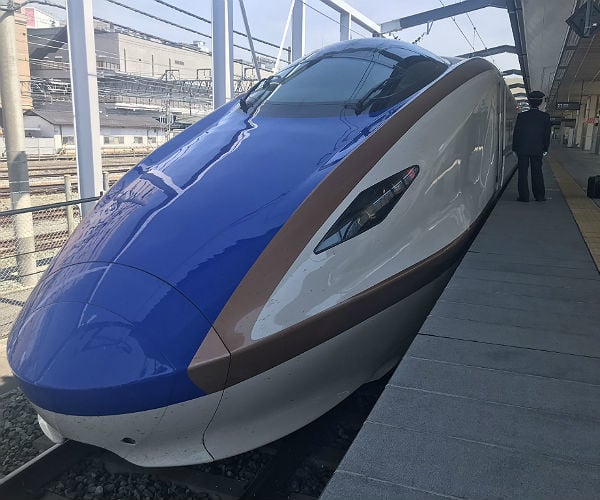 But not before we had our first sight of the magnificent Mount Fuji as we hurtled out of suburbia into lush rolling hills and picturesque valleys. Like every National Geographic image we had seen of Fuji it stood majestically in isolation, dominating the landscape with its summit in snow as if the peak had been dipped in a bucket of melted vanilla ice cream. It was a crisp clear day without a cloud in the blue sky, my goodness it was a wonderful sight. But Mount Fuji had to wait, first was a hike on the most famous trail in Japan.
But not before we had our first sight of the magnificent Mount Fuji as we hurtled out of suburbia into lush rolling hills and picturesque valleys. Like every National Geographic image we had seen of Fuji it stood majestically in isolation, dominating the landscape with its summit in snow as if the peak had been dipped in a bucket of melted vanilla ice cream. It was a crisp clear day without a cloud in the blue sky, my goodness it was a wonderful sight. But Mount Fuji had to wait, first was a hike on the most famous trail in Japan.
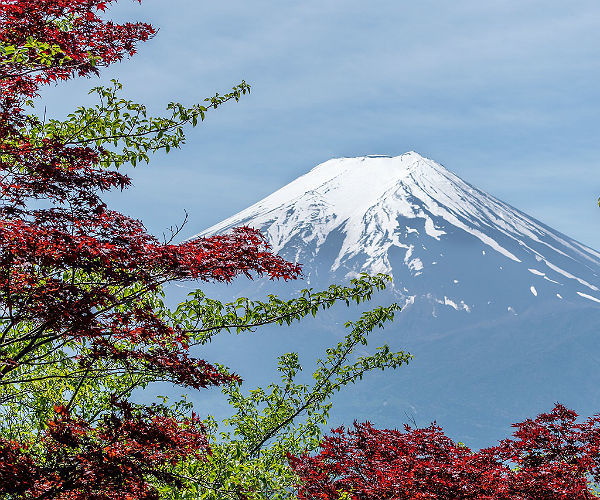 The Nakasendo Highway or “Road through the Central Mountains” was part of feudal Japan’s network of highways and first established in the 8th C. linking the areas around the then capital Nara as the state grew. It continued to develop until the Edo period when the centre of power moved to what is now Tokyo and it became a communications route to send messages, goods and personnel across the empire between Kyoto and Tokyo. Trodden by feudal lords, samurai, merchants and ancient travellers it was our turn to follow in their footsteps on this most beautiful of trials.
The Nakasendo Highway or “Road through the Central Mountains” was part of feudal Japan’s network of highways and first established in the 8th C. linking the areas around the then capital Nara as the state grew. It continued to develop until the Edo period when the centre of power moved to what is now Tokyo and it became a communications route to send messages, goods and personnel across the empire between Kyoto and Tokyo. Trodden by feudal lords, samurai, merchants and ancient travellers it was our turn to follow in their footsteps on this most beautiful of trials.
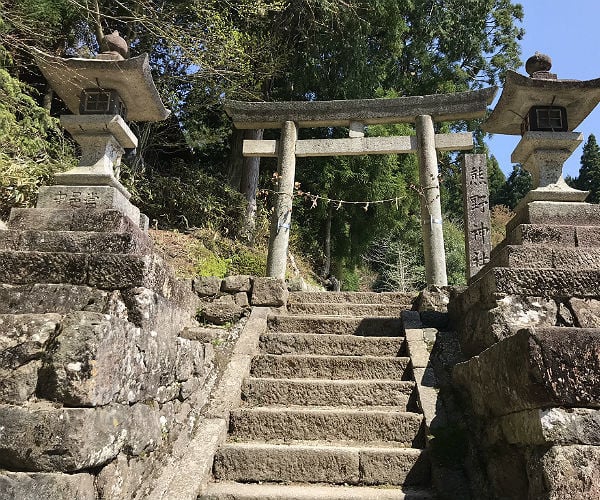 We were just setting off to tackle our small part of the route when we met two elderly ladies a little red faced and puffing a bit, coming in the opposite direction.
‘Goodness,’ said Helene, ‘you look exhausted, is it that tough?’
‘Are you just setting off?’ one of them asked, in a broad North Country accent.
‘Yes, how long has it taken you?’ she asked.
‘Four days so far,’ replied the elderly lady.
The couple went on to explain they were hiking half of the whole Highway, although we had heard it takes up to 12 days to hike the whole trail. We felt a little too ashamed to admit we were tackling only a few miles, so wished them luck and set off up the narrow cobbled path on a beautiful warm and clear day.
We were just setting off to tackle our small part of the route when we met two elderly ladies a little red faced and puffing a bit, coming in the opposite direction.
‘Goodness,’ said Helene, ‘you look exhausted, is it that tough?’
‘Are you just setting off?’ one of them asked, in a broad North Country accent.
‘Yes, how long has it taken you?’ she asked.
‘Four days so far,’ replied the elderly lady.
The couple went on to explain they were hiking half of the whole Highway, although we had heard it takes up to 12 days to hike the whole trail. We felt a little too ashamed to admit we were tackling only a few miles, so wished them luck and set off up the narrow cobbled path on a beautiful warm and clear day.
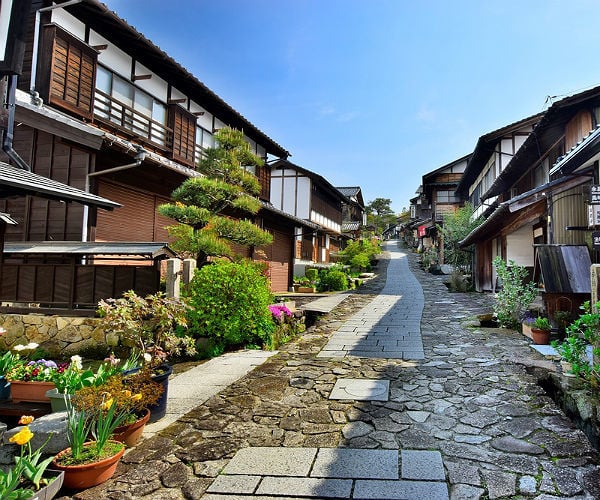 Its full length is an impressive 531 km weaving between mountain ranges, on paved and cobbled paths. 69 Villages along its route were selected as juku Post Towns to provide food and lodgings for official travellers, our hike was from one of these, Magome to the most beautiful of them all, Tsumago the finest traditional Post Town in Japan.
Its full length is an impressive 531 km weaving between mountain ranges, on paved and cobbled paths. 69 Villages along its route were selected as juku Post Towns to provide food and lodgings for official travellers, our hike was from one of these, Magome to the most beautiful of them all, Tsumago the finest traditional Post Town in Japan.
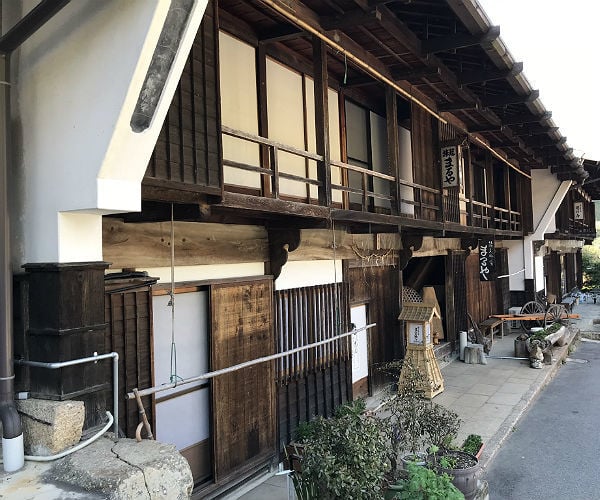 In 1968 the Tsumago locals banded together to create a movement and protect the heritage of their town. Their intention was to preserve its old Edo buildings and the Meiji Period unique character of the village, so there are no TV ariels, telephone pylons or electric cables. It looks just like it did hundreds of years ago.
“Ring bell hard against bears” read the sign attached to the first bell post we came across. Without a bear to ring it against I gave the chain a long hard pull with the hope that the peels would scatter any bears on our path. The bells reminded me of the school dinner bell; I hoped it wasn’t the same for the bears.
In 1968 the Tsumago locals banded together to create a movement and protect the heritage of their town. Their intention was to preserve its old Edo buildings and the Meiji Period unique character of the village, so there are no TV ariels, telephone pylons or electric cables. It looks just like it did hundreds of years ago.
“Ring bell hard against bears” read the sign attached to the first bell post we came across. Without a bear to ring it against I gave the chain a long hard pull with the hope that the peels would scatter any bears on our path. The bells reminded me of the school dinner bell; I hoped it wasn’t the same for the bears.
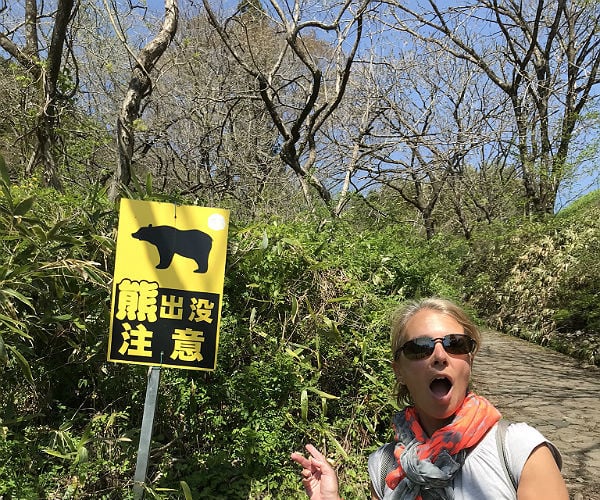 The bell posts were dotted every half a mile or so along the track as it passed through the pine forest above the gushing Araragi River. We thought singing along the way might add to the bells to frighten off the occasional bear, or at least Helene thought my tone deaf voice might.
Coming out of the bear’s home we arrived at the river bank and an absolutely stunning view of cherry blossom in whites, pink and reds, some trees surprisingly displaying all three. The scene was thick with colour and an ideal place to stop for our picnic of sushi, Sapporo beer and a small bottle of sake on a low table under the cherry blossom, what could be more Japanese? Wonderful.
The bell posts were dotted every half a mile or so along the track as it passed through the pine forest above the gushing Araragi River. We thought singing along the way might add to the bells to frighten off the occasional bear, or at least Helene thought my tone deaf voice might.
Coming out of the bear’s home we arrived at the river bank and an absolutely stunning view of cherry blossom in whites, pink and reds, some trees surprisingly displaying all three. The scene was thick with colour and an ideal place to stop for our picnic of sushi, Sapporo beer and a small bottle of sake on a low table under the cherry blossom, what could be more Japanese? Wonderful.
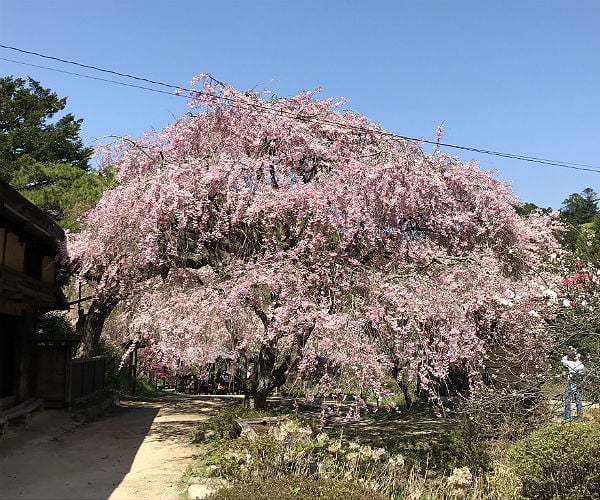 The trail took us through forests with a deep carpet of pine needles and along old cobbled paths hugging the river, it was a beautiful way to spend an afternoon with very few other walkers on the route.
On arrival at Tsumago we were not disappointed, what an elegant and beautiful village it is, built in the stunning style of ancient Japan and thankfully not overly commercialised.
Our stay that night was at the traditional Japanese boutique hotel Hanaya Ryokan, where we were to experience the best of Japan’s hospitality and its exacting etiquette. It’s the footwear that poses the biggest challenge. Shoes off and lots of mutual bowing on arrival, we were then provided with slippers and followed our host to our room where we were required to enter and remain bare foot, apart from the obligatory colourful toilet sandals, to be worn only inside the toilet. Leaving the smallest room with the sandals still on would be a definite faux pas.
The trail took us through forests with a deep carpet of pine needles and along old cobbled paths hugging the river, it was a beautiful way to spend an afternoon with very few other walkers on the route.
On arrival at Tsumago we were not disappointed, what an elegant and beautiful village it is, built in the stunning style of ancient Japan and thankfully not overly commercialised.
Our stay that night was at the traditional Japanese boutique hotel Hanaya Ryokan, where we were to experience the best of Japan’s hospitality and its exacting etiquette. It’s the footwear that poses the biggest challenge. Shoes off and lots of mutual bowing on arrival, we were then provided with slippers and followed our host to our room where we were required to enter and remain bare foot, apart from the obligatory colourful toilet sandals, to be worn only inside the toilet. Leaving the smallest room with the sandals still on would be a definite faux pas.
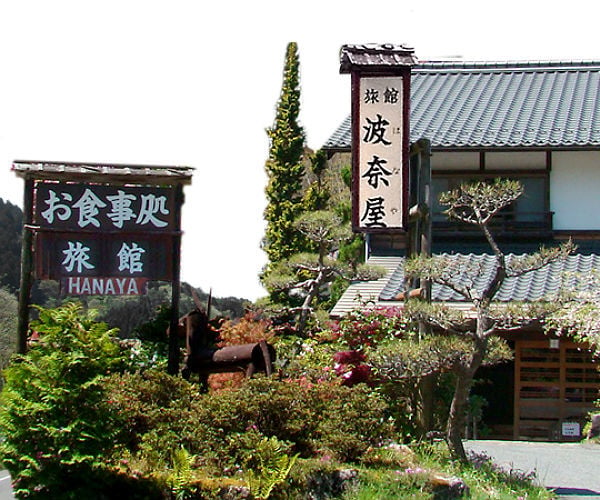 Our room had a low table with still lower and quite demanding chairs, the floor was covered in tatami mats and the walls seemed to be made of paper. But there was something missing, no bed. Our non English speaking host must have registered my confusion as I peered into wardrobes, the bathroom and even the balcony, well you never know!
‘Futon, David,’ said Helene, who knows about these things.
Our host mimed making a bed and not to touch the rolled up colourful duvet affair in another cupboard.
‘Fair enough, floor it is then,’ I said, ‘only one night I suppose.’
We were then handed our own yukata’s, apparently. A dressing gown kimono type of affair that tied, importantly left side over the right (no idea why), with a huge double waist band around the middle, and fell to the floor, Helene looked terrific, I looked like I’d just got out of bed.
We were now all prepared to tackle our first onsen bath, a long-standing tradition the Japanese are very proud of but which is riddled with ritual. We needed to be careful here, onsen bathing is enjoyed naked. These hot cypress springs are both indoor and out and can be communal, fortunately our ryokan provided a segregated option so we set off in our colourful yukatas and a pair of open clogs to find a black flag for me and a red flag for Helene signifying the entry to our respective onsens.
Our room had a low table with still lower and quite demanding chairs, the floor was covered in tatami mats and the walls seemed to be made of paper. But there was something missing, no bed. Our non English speaking host must have registered my confusion as I peered into wardrobes, the bathroom and even the balcony, well you never know!
‘Futon, David,’ said Helene, who knows about these things.
Our host mimed making a bed and not to touch the rolled up colourful duvet affair in another cupboard.
‘Fair enough, floor it is then,’ I said, ‘only one night I suppose.’
We were then handed our own yukata’s, apparently. A dressing gown kimono type of affair that tied, importantly left side over the right (no idea why), with a huge double waist band around the middle, and fell to the floor, Helene looked terrific, I looked like I’d just got out of bed.
We were now all prepared to tackle our first onsen bath, a long-standing tradition the Japanese are very proud of but which is riddled with ritual. We needed to be careful here, onsen bathing is enjoyed naked. These hot cypress springs are both indoor and out and can be communal, fortunately our ryokan provided a segregated option so we set off in our colourful yukatas and a pair of open clogs to find a black flag for me and a red flag for Helene signifying the entry to our respective onsens.
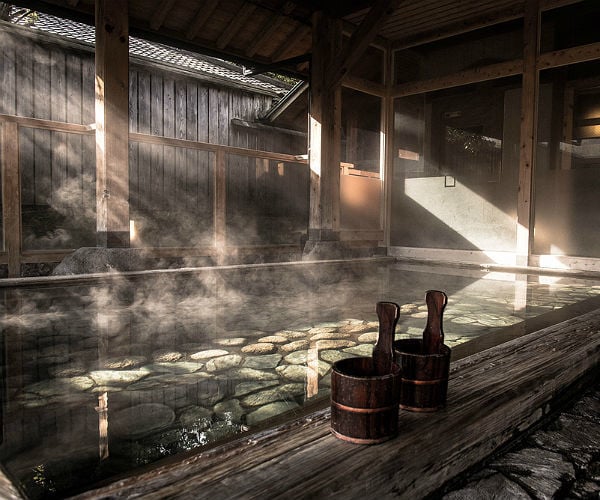 The changing room had a short multilingual notice with instructions for use:
The changing room had a short multilingual notice with instructions for use:
- Strip naked.
- Wash thoroughly before entering the onsen.
- Enter the onsen slowly, it is hot.
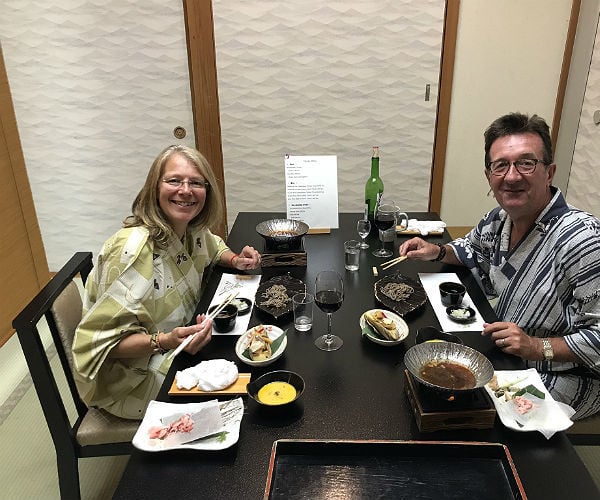 The dishes kept coming from our waitress in her colourful kimono and the sake kept flowing as our miming of the ingredients became more extravagant and funnier. We collapsed into futons late in the evening for a wonderful night’s sleep, what a glorious day.
David Moore is Author of ‘Turning Left Around the World’. Published by Mirador and available from Amazon, it is an entertaining account of David and his wife’s travel adventures – often intriguing, frequently funny and occasionally tragic.
If you would like to be a guest blogger on A Luxury Travel Blog in order to raise your profile, please contact us.
The dishes kept coming from our waitress in her colourful kimono and the sake kept flowing as our miming of the ingredients became more extravagant and funnier. We collapsed into futons late in the evening for a wonderful night’s sleep, what a glorious day.
David Moore is Author of ‘Turning Left Around the World’. Published by Mirador and available from Amazon, it is an entertaining account of David and his wife’s travel adventures – often intriguing, frequently funny and occasionally tragic.
If you would like to be a guest blogger on A Luxury Travel Blog in order to raise your profile, please contact us.Did you enjoy this article?
Receive similar content direct to your inbox.


I’ve got this theory that everyone should step out of their comfort zone and take on the challenge of one of the world’s great walking trails.
I’ve read a lot about some of the American great walks and of course there’s England’s Pennine Way too. Suddenly reading about The Nakasendo Highway I think that I need to research that one a lot further. Taking the road through the central mountains would be a good way to understand Japanese life.
If there’s one picture that sums up Japan it is that iconic photo of snow-capped Mount Fuji with cherry blossom in the foreground framing the peak. It’s mad but I want to travel half-way round the world to take that picture. Not sure what I’d do with it though! Perhaps a full-size poster for my study.
You say that your luggage was forwarded ahead. Does that always happen with the bullet train? I suppose they don’t want a train that fast slowed down by loads of luggage? Is the luggage much slower than your journey? It’s just that I’ve got a thing about keeping my luggage nearby.
I would definitely recommend staying at a ryokan rather than a hotel for that authentic Japanese inn experience. I’ve always stayed in one whenever I can when I visit Japan. I especially like that it comes with dinner and breakfast and access to the onsen, which I really love. Be prepared to spend a bit more though, but it’s worth the experience if only you need to try it once.
wow… what a wonderful experince you have shared…
With all our teams about to fly off to the Rugby World Cup it’s re-ignited one of my old dreams to travel to Japan. Obviously I’m not going to get there for the World Cup. Hopefully I can make it next year. I came across this post doing my research. It’s definitely now one of my top things to do whilst in Japan. Thanks for all the info.
I remembered reading this when it was first published. A lovely piece that made quite an impact on me. Looking to do a big one in 2020 and Japan was right up there with a stay at a couple of Ryokan.